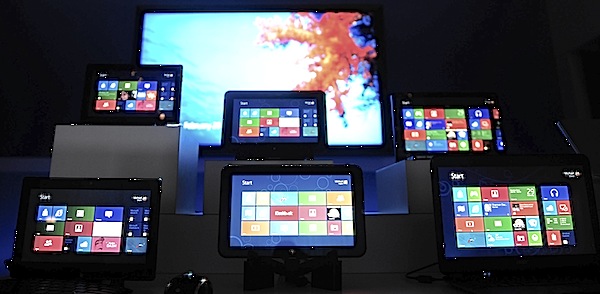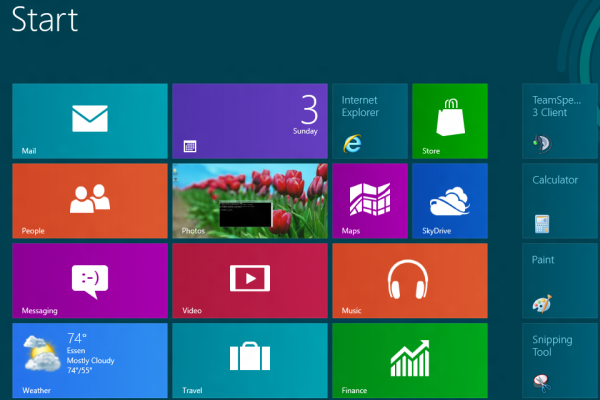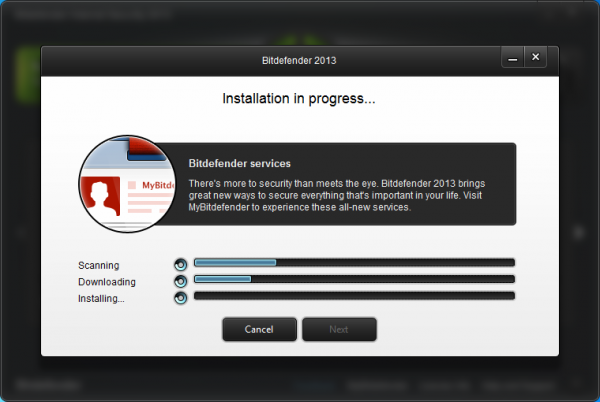
If you like your security suites to be feature-rich then Bitdefender’s offerings have always been a good choice. And the company’s latest releases show there’s no sign of that changing any time soon: Bitdefender Internet Security 2013 includes all the core functionality you’d expect from a suite (antivirus, firewall, spam filter, parental controls) and a lot you probably wouldn’t (virtual “Safepay” browsing, USB autorun virus protection, more).
All this power doesn’t seem to add much in the way of complexity, though. Installation is straightforward, with a single small setup tool scanning your system for threats, downloading the full suite and installing it for you with the minimum of hassle.
And Internet Security 2013′s use of Bitdefender’s Autopilot technology means that, initially at least, the program will resolve almost every security issue on its own. So there’s no blizzard of popups, no alerts, not even any configuration options to set -- at most you’ll see a new indicator on the program’s gadget to show that some event has occurred (and you can even ignore that, if you like). It’s all very straightforward.
If you’d like to take more manual control of what’s happening, though, the Internet Security 2013 console is on hand. This presents six panels covering the main program areas (Antivirus, Antispam, Privacy, Firewall, Updates, and Bitdefender’s social networking protection, Safego).
There’s a lot of management functionality here -- you can disable particular modules, configure them, run virus scans and more -- but it’s all well organized, and we had no real problems finding our way around. Which is probably just as well, as the Help system isn’t great (to locate the “USB Immunizer” entry you must search for “Immunizer”, for instance, as “USB” returns nothing).
How did these individual modules behave, though? That’s what we checked next.
Antivirus
Bitdefender Internet Security 2013 offers plenty of antivirus options. Its “Autoscan” mode checks your system for threats whenever it’s idle; files are scanned for malware as you access them; you can run quick, full or custom scans on demand, and Rescue Mode provides a bootable environment which can disinfect a system, even when Windows no longer starts (as long as you’re using Vista or later).
Scanning speeds are initially disappointing, but performance quickly improves. Our first “Quick” scan was 6 minutes 10 seconds, but this dropped to 1:42 next time, and 1:23 by the third scan.
Similarly, our first full system scan took just over an hour, but this plummeted to 7:11 by the second. And if you need more performance gains then there are plenty of configuration options which may help.
Accuracy? Bitdefender’s antivirus engine generally does well in independent testing. AV Comparativesawarded it the highest Advanced+ rating in their March 2012 Comparative tests, for instance, and the program was particularly notable for its lack of false positives.
Our own tests were rather smaller, with 10 of the very latest malware samples spread around a test environment, but we had a very similar experience: Internet Security 2013 detected and removed every one, while raising very few false positives (beyond the usual one or two concerns over NirSoft tools).
And again, Autopilot meant we didn’t have to choose what to do with every single file: the program decided on our behalf for 59 files, only asking about one particularly tricky case. This works for us, as Autopilot generally makes sensible decisions, but you can take alternatively take full manual control if you prefer.
Browsing Protection
Detecting malware is good, but avoiding infection in the first place is better, and Bitdefender Internet Security 2013 offers several components which help you do just that.
The simplest options just alert you to dangerous links. Search Advisor adds warning icons to your Google, Bing, Yahoo! and Baidu search results, for instance -- this worked well enough, apart from an occasional delay of a few seconds before they were displayed. And Safego does a good job of filtering your Twitter and Facebook, although this is also available separately for free.
The antiphishing module is even better, adding strong real-time protection to IE, Firefox, Chrome, Safari, Opera and Yahoo! Messenger. And we do mean strong. We tested the program with malicious URLs from several sources and its lowest detection rate was 70%, very good in this field.
The headline new feature here is Safepay, though, an isolated and secure browser which should detect when you visit a banking or online shopping site, and pop up to continue the session, so ensuring your credit card details, account information or other sensitive data can’t easily be intercepted by anything else which might be running on your PC. And sure enough, in our tests it prevented a couple of commercial keyloggers from seeing anything of what we were doing online.
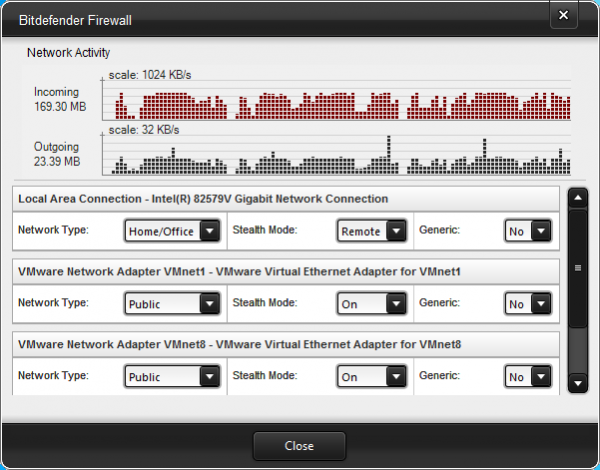
We had a small problem, in that Safepay didn’t always pop up automatically for us, even with sites which we thought might need protection (PayPal, eBay, Amazon). Which can easily be fixed -- you’re able to manually define URLs where you’d like it to appear, or you can just fire up Safepay just like any browser and visit wherever you like -- but it’s a little annoying.
And there’s a more fundamental issue in Safepay’s isolation. Launch the program and your desktop disappears, which means you can’t access other programs until your Safepay session is over. That’s great for keeping you safe, but it also means you won’t be able to use a password manager to log in, which may generate more security problems of its own.
On balance, though, Safepay represents a welcome addition to the package. And if it encourages Bitdefender to add an Identity Safe-like password manager to the suite in future builds, then so much the better.
Firewall, Anti-spam
If there’s one component where we really appreciate Bitdefender Internet Security 2013′s intelligence, it’s the firewall. You’re not left to drown in endless warnings about “svchost.exe” or whatever wants to go online, the program just handles everything itself, while also properly stealthing your PC’s ports to protect you from internet attacks.
We would question some of the firewall’s initial settings, though (its smart intrusion detection system is turned off by default, for instance – go to Settings > Firewall > Advanced to turn it on, so protecting you from the installation of malware drivers, amongst other things).
And configuring the firewall itself isn’t for the faint-hearted, as in places it can be a complex and far from intuitive process.
Elsewhere, the Internet Security 2013 spam filter integrated neatly with our Outlook 2010 setup, also with no intervention required. (And as it runs at the POP3 and SMTP protocol level, the program should work transparently with any standard email client.)
Its initial accuracy wasn’t great, though, with the program picking up only 136 out of 326 spam emails received over the test period (around 42%). Still, it also raised only a single false positive (a legitimate newsletter), and you can train the system over time to do better, so there is hope here – it’ll probably just take a little work.
And There’s More
Parental controls are usually one of the lesser features in most security suites, if they’re included at all, but Bitdefender clearly see things differently. The tools provided here can monitor your child’s Facebook activities, web browsing, instant messaging, perhaps even their location, instant messaging, SMS messages or phone calls (if they have an Android-based phone which you equip with the necessary app, anyway).
There are plenty of options to control the sites they visit, the applications they run, the times they can go online, and more. Or, if you prefer, you can take a more hands-off approach and just use the detailed reports to monitor what they’re doing.
Bitdefender still have plenty of work to do here. The system needs to be able to monitor iOS devices, for instance, and the instant messaging component also requires attention (right now it supports Yahoo! IM only). But it is shaping up well, and may already be sufficient for some people’s needs.
The other interesting addition in Bitdefender Internet Security 2013 is the USB Immunizer. Right-click a USB drive in Explorer, select Bitdefender > Immunize this drive, and the program will make it appear as though there’s an “autorun.inf” file on the drive already – so malware won’t be able to directly create its own.
Does it work? Yes. Well enough, anyway. There are ways around this -- reformatting the drive removes the protection, for instance, and malware could presumably also write to the file system directly to undo Bitdefender’s work -- but they’re not something the average autorun virus is going to do. And so, for the moment at least, the USB Immunizer does an effective job of protecting you from autorun viruses.
Bitdefender Internet Security 2013 isn’t the perfect security suite, then: it has a few issues, here and there. The program scores highly where it really counts, though; this release has some useful new features and improvements; and for all its functions, the suite remains very easy to use and has minimal impact on your system performance. It really could be a great security choice for everyone, from Windows experts to PC novices.
If the feature set doesn’t quite fit with your requirements, though, keep in mind that Bitdefender do have a couple of alternatives. Antivirus Plus 2013 combines the antivirus engine with Safepay, the USB Immunizer and plenty of browsing protection (antiphishing tool, Search Advisor, Safego and more); while Total Security 2013 has the full Internet Security feature set, and adds file encryption and shredding, a PC Tune-up component, and Anti-Theft, a service to help locate and recover lost or stolen computers. 30-day trial builds of both are available if you need them.



 Everyone needs to keep their life organized and any tool that can help with this is welcome. One such piece of software is EssentialPIM, which has just been updated to version 5.0. The headline new feature: synchronization with both iOS and Android devices; a companion Android app is available for download from Google Play, while an iOS app is expected in the App Store in the near future. But this is not the only new feature in this handy PIM which bears quite a resemblance to Microsoft Outlook.
Everyone needs to keep their life organized and any tool that can help with this is welcome. One such piece of software is EssentialPIM, which has just been updated to version 5.0. The headline new feature: synchronization with both iOS and Android devices; a companion Android app is available for download from Google Play, while an iOS app is expected in the App Store in the near future. But this is not the only new feature in this handy PIM which bears quite a resemblance to Microsoft Outlook.

 Today, UK Judge Colin Birss confirms what Apple fans have claimed for years: Samsung isn't "cool enough" to copy the trendy fruit-logo company. But the result is opposite their meaning about copying badly. Birss ruled that
Today, UK Judge Colin Birss confirms what Apple fans have claimed for years: Samsung isn't "cool enough" to copy the trendy fruit-logo company. But the result is opposite their meaning about copying badly. Birss ruled that 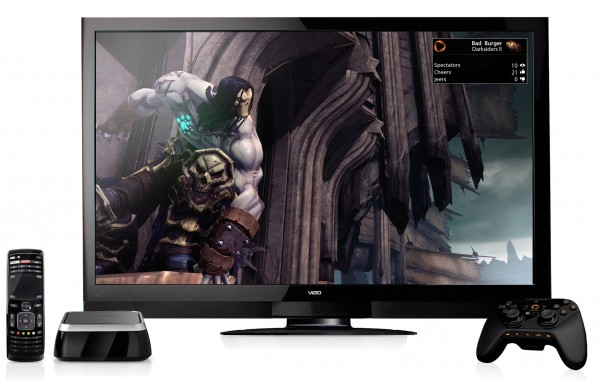

 System optimization tools are ten-a-penny, but those that are worthy of note are few and far between. One tool that falls into the noteworthy camp is
System optimization tools are ten-a-penny, but those that are worthy of note are few and far between. One tool that falls into the noteworthy camp is  Malware on Android devices is a real and growing threat, and one that is only likely to worsen. The latest Trojan to be found in the wild is a particularly nasty piece of coding named MMarketPay.A by
Malware on Android devices is a real and growing threat, and one that is only likely to worsen. The latest Trojan to be found in the wild is a particularly nasty piece of coding named MMarketPay.A by 